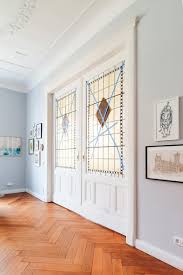When creating a modern home, it’s often the small design choices that make the biggest impact. Skirting boards and door frames might seem like minor features, but they play a crucial role in defining the overall look and feel of your space. These elements frame your walls, floors, and doors, giving your interiors structure and polish. In modern design, skirtings and door frames have evolved from simple finishing pieces into statement features that enhance style and sophistication.
The Role of Skirting and Door Frames in Modern Interiors
Modern interior design focuses on simplicity, clean lines, and balance — and skirting boards and door frames help achieve exactly that. Skirtings hide the joint between your walls and floors, protecting your walls from wear and tear, while door frames outline entrances and transitions between rooms. Together, they create a visual border that brings unity to your interior. When designed thoughtfully, these finishing details can transform a plain room into a sleek, well-coordinated space.
Why Modern Homes Need Stylish Finishing Touches
Every modern home thrives on consistency and subtle elegance. While bold décor elements grab attention, it’s the finishing details like skirting and door frames that ensure everything looks complete. These trims help tie flooring, walls, and doors together, creating a smooth flow throughout your space. They also allow for creative expression — whether through bold colour contrasts, minimalist shapes, or unique materials. Modern design celebrates simplicity, and that’s where skirtings and door frames shine the most.
Choosing the Right Material
Modern interiors demand materials that are durable, smooth, and easy to maintain. MDF (Medium-Density Fibreboard) is the most popular choice for skirting and door frames in contemporary homes. It offers a flawless finish, resists warping, and can be painted in any colour to match your décor. Solid wood adds warmth and texture but requires more care and maintenance, while PVC options are ideal for moisture-prone areas like kitchens and bathrooms. For a premium look, you can also combine materials — for instance, MDF skirtings with veneered wooden door frames for subtle contrast.
Modern Design Styles and Profiles
Modern skirtings and door frames come in a variety of profiles and designs that suit different tastes:
-
Square Edge or Flat Profiles: Clean and minimal, ideal for contemporary homes.
-
Chamfered or Bullnose Edges: Slightly curved for softer transitions between walls and floors.
-
Shadow Gap (Recessed) Designs: A high-end modern option that creates a sleek, floating wall effect.
-
Tall Skirtings with Thin Door Frames: Add height and drama to open spaces.
When both skirting and door frames share a similar design language, they blend seamlessly into your interior architecture while maintaining modern visual appeal.
Colour Coordination for Modern Spaces
Colour plays a huge role in achieving a modern aesthetic. While traditional homes often feature white skirtings and door frames for contrast, modern spaces experiment with bold or tonal colour schemes.
-
Monochrome Design: Paint both trims the same colour as the wall for a clean, continuous effect.
-
Contrasting Accents: Use black or dark grey trims to frame light-coloured walls for a striking, modern contrast.
-
Neutral Harmony: Shades of beige, taupe, or soft grey create a warm, minimalist vibe.
Matching skirting and door frames in either colour or tone helps maintain a consistent, cohesive design throughout the home.
Proportion and Balance
In modern design, proportion is everything. The height and thickness of your skirting should complement your room’s scale and the size of your door frames. Taller skirtings look elegant in rooms with high ceilings, while lower profiles suit compact spaces. Similarly, slim door frames pair beautifully with minimalist interiors, while chunkier designs add weight and definition to larger rooms. Keeping proportions balanced ensures a harmonious, well-structured look.
Finishing and Texture Options
Modern skirting and door frames can be finished in a variety of ways to match your interior style.
-
Matte Finishes: Subtle and contemporary, ideal for minimalist homes.
-
Gloss Finishes: Reflective and easy to clean, adding brightness and depth.
-
Textured or Veneered Finishes: Offer a natural touch while keeping a modern edge.
These finishes can be applied in any colour palette to match modern flooring options such as light oak, concrete grey, or polished tiles.
Installation and Maintenance Tips
Modern skirtings and door frames are designed to be both stylish and functional. Installation is straightforward — MDF and PVC options can be fixed with adhesive or nails, while wood requires careful fitting to prevent warping. Once installed, maintenance is minimal. A simple wipe-down with a damp cloth keeps them clean, and an occasional repaint or polish can refresh their appearance.
Design Ideas for a Modern Look
-
Use floor-to-ceiling door frames for a luxurious, architectural feel.
-
Combine white skirting with black doors for a high-contrast statement.
-
Pair shadow-gap skirting with hidden door frames for a minimalist, seamless effect.
-
Choose matching trims throughout your home to enhance visual flow and cohesion.
Conclusion
Modern skirting and door frames may be subtle, but they make a significant difference in the way your home looks and feels. They define spaces, protect walls, and add layers of style that complete your interior design. By choosing the right materials, profiles, colours, and finishes, you can transform your rooms into cohesive, contemporary spaces that feel elegant and inviting. These details may be small, but in modern design, it’s precisely these finishing touches that make a home truly stand out.


